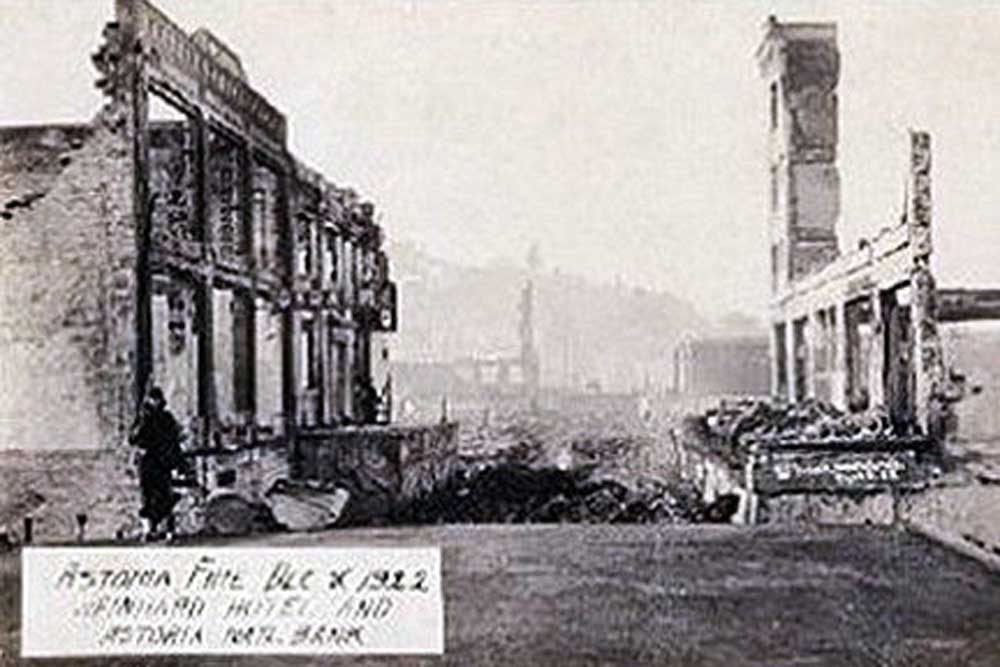‘Everything is ruined’
Published 7:00 pm Thursday, December 8, 2016

- notforsale
Yesterday, Dec. 8, was the 94th anniversary of the devastating 1922 Astoria fire that destroyed 24 blocks of the downtown business district, causing $12 million in damage (about $171 million now) and leaving at least 2,000 homeless.
Trending
According to several stories in the Morning Oregonian on Saturday, Dec. 9, 1922, the fire destroyed “every department store, hotel, bank and countless small business establishments.” As one headline said, “Everything is ruined.” Remarkably only two deaths were left in its wake.
Norris Staples, president of the Commercial Savings bank, died of heart failure at 4 a.m. from his exertions during the fire. Coroner Hughes concluded that laborer John G. Smith, 50, who was found hanging by the neck from a pier at the foot of Eighth Street at daybreak, committed suicide from fright.
The fire was discovered around 2 a.m. in a wooden building housing Thiel’s Café on Commercial Street between 11th and 12th streets, and was out of control within half an hour. The fire’s rapid spread was attributed to the flames eating their way below the paved streets, then being fed by the creosote on the pilings holding up the pavement. Dynamite was used to stop the fire’s progress, but even so, Astorians as far as 10 blocks away were moving furniture and valuables uphill to safety. When flames threatened city hall, the prisoners were released; coincidentally, the court docket mysteriously disappeared.
Trending
Firefighters, apparatus and 6,000 feet of hose arrived from Portland the next morning, and the fire was under control by noon. Portland hotel owners donated $5,000 to the relief fund, Portland wholesale grocers and bakeries sent food to the stricken city, and the American Red Cross and Salvation Army showed up to help. The local YMCA served food, and soldiers and special policemen stood guard downtown to prevent looting.
Pictured, in the aftermath, Astoria Bank and Weinhard Hotel. Despite streets, gas and water pipes and electrical and phone systems being destroyed, Astoria was promptly rebuilt — this time on dredge sands, not wooden pilings — with a new layout and wider streets, much as it looks today.
— Elleda Wilson









